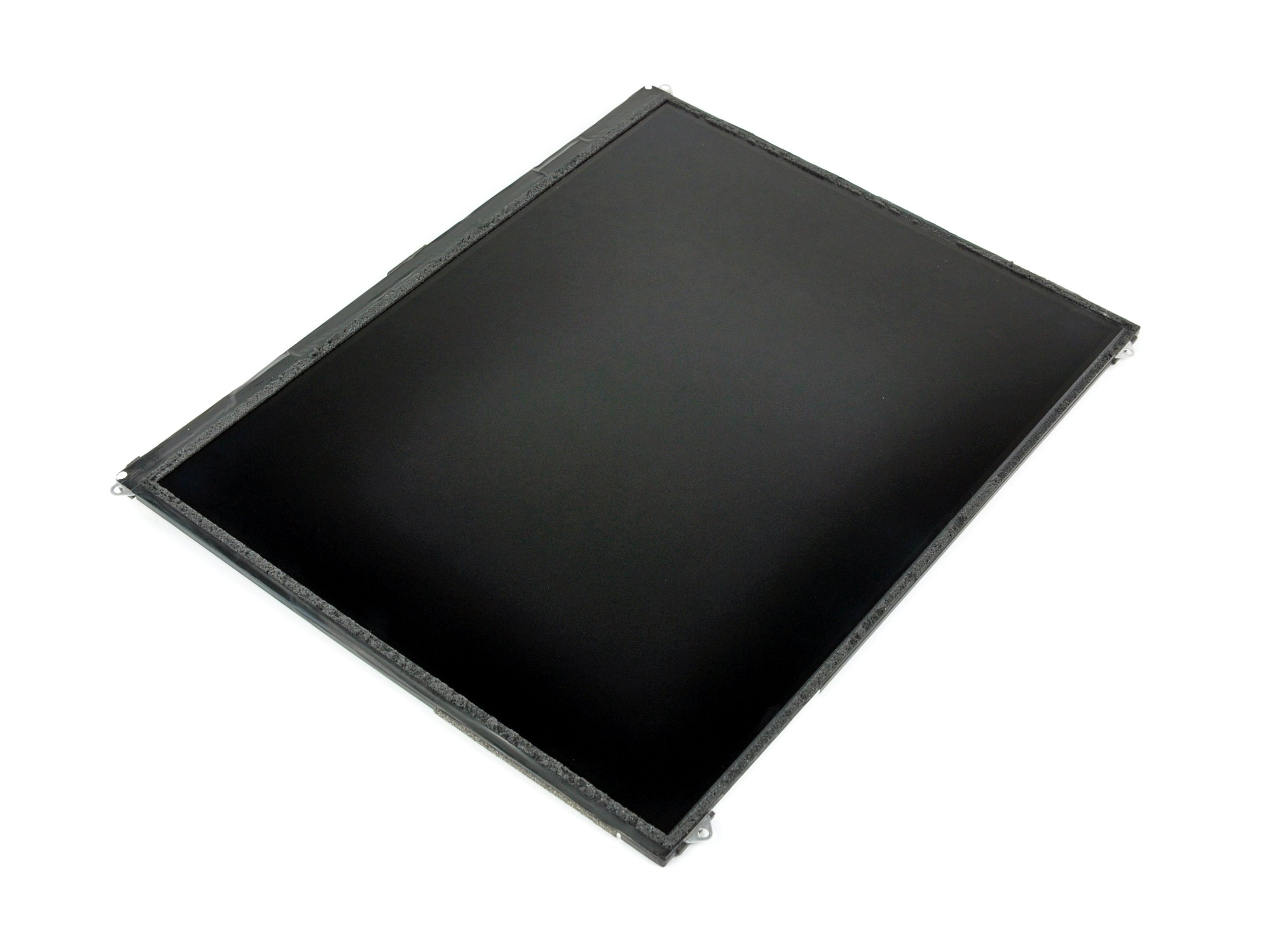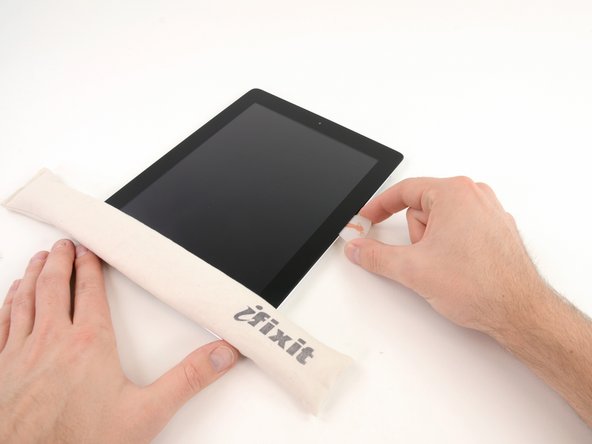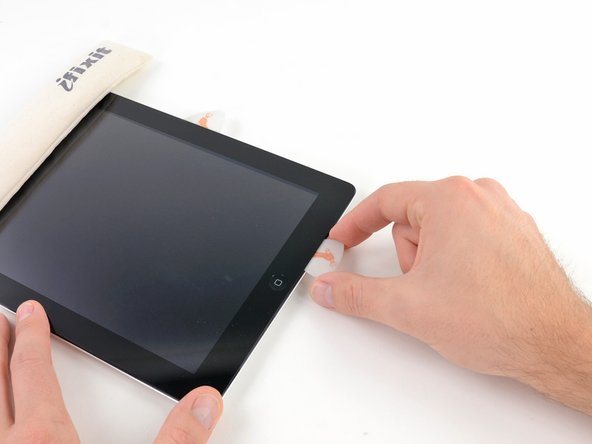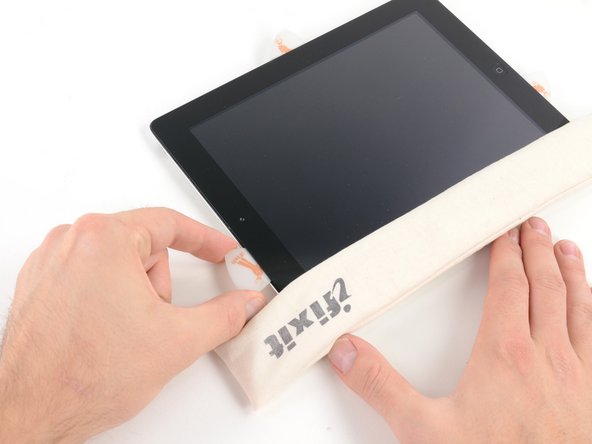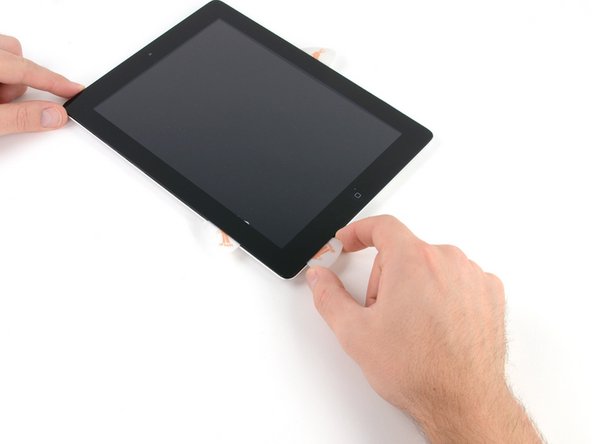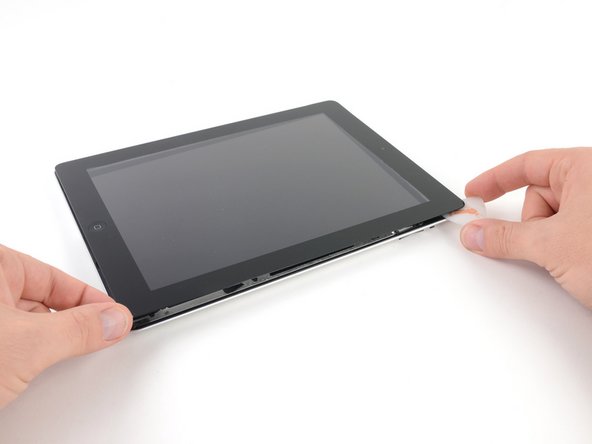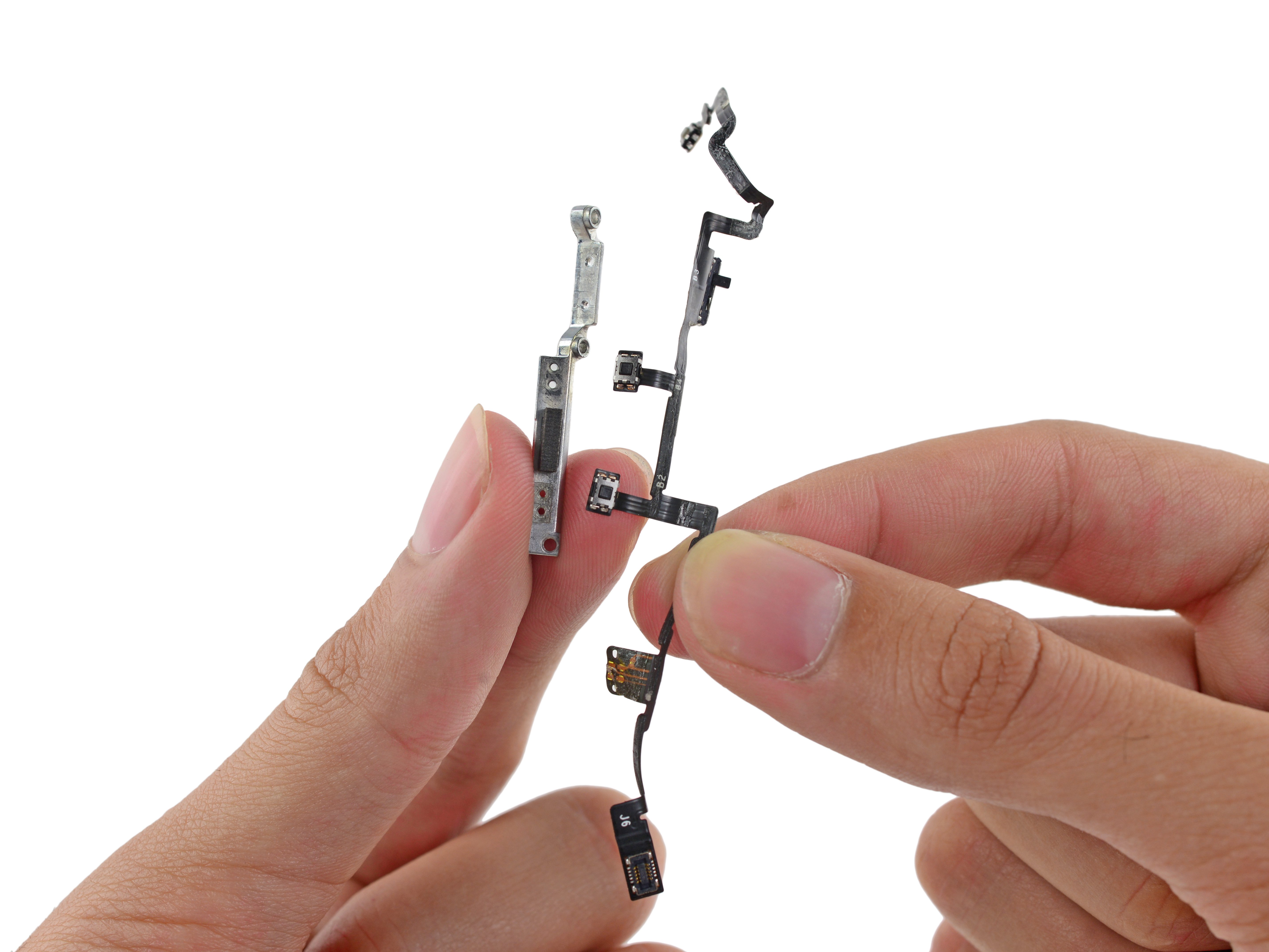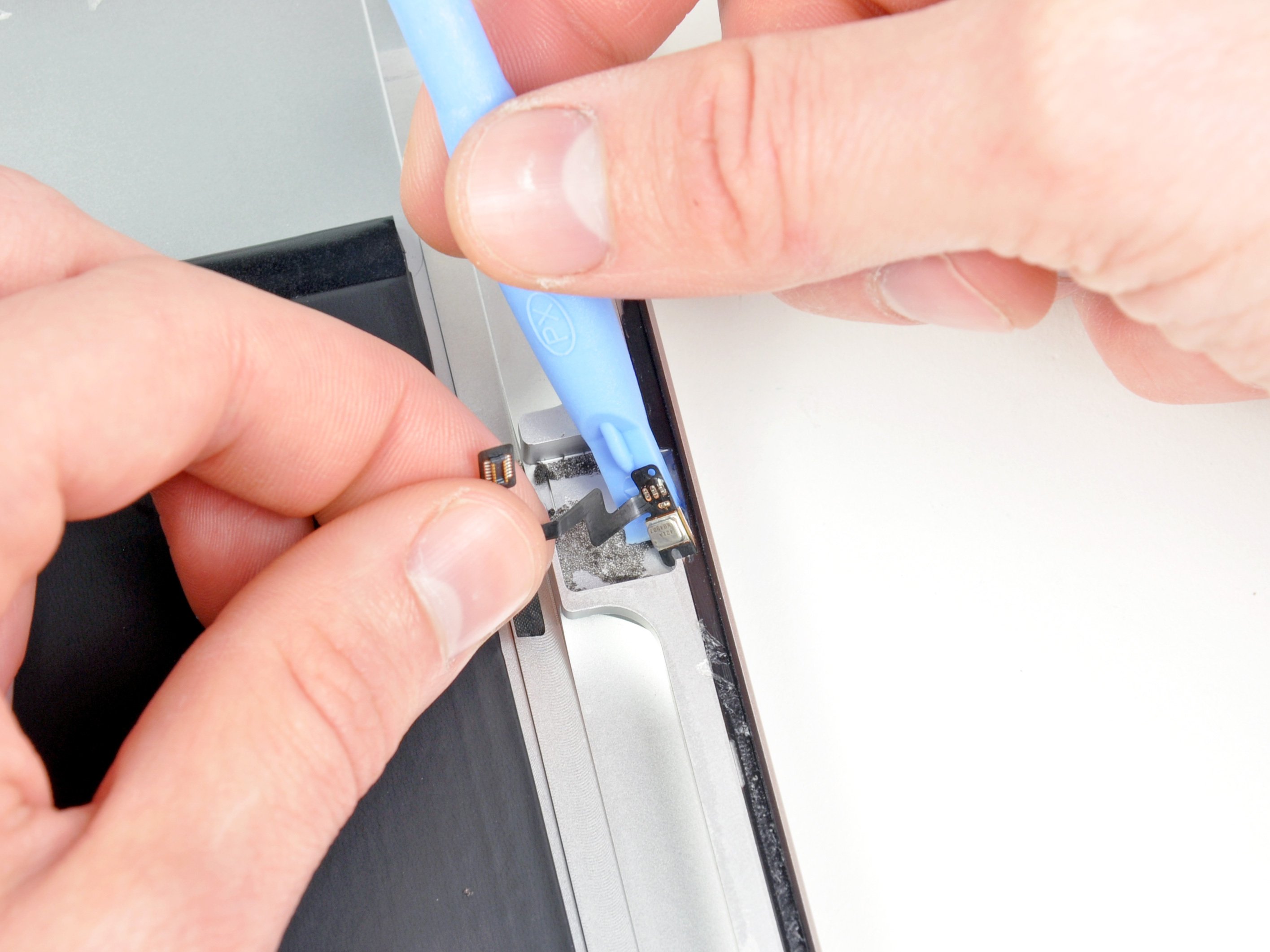iPad 2 Wi-Fi EMC 2415 LCD Replacement
Duration: 45 minutes
Steps: 36 Steps
Ready to tackle that shattered LCD? Let’s dive in and swap out that broken screen for a shiny new one! Keep your cool, follow along step by step, and before you know it, your device will be looking as good as new. And remember, if you hit a snag, no worries! You can always schedule a repair for some extra hands.
Step 1
For carousel microwaves: Double-check that the plate spins smoothly without any hiccups. If your iOpener gets stuck, it might overheat and cause burns, so watch out!
We suggest giving your microwave a little TLC before diving in, as any stubborn residue lurking at the bottom might just hitch a ride on the iOpener.
- Pop the iOpener right in the middle of the microwave.
Tools Used
Step 2
Hey there! Just a friendly reminder to keep an eye on the iOpener during your repair mission. If it gets too hot, it might just explode like a popcorn kernel! So, let’s keep it under 100˚C (212˚F) for safety, okay?
If the iOpener looks like it's taken a trip to the gym and is a bit swollen, steer clear of it. Safety first!
If the middle of the iOpener is still feeling a bit too toasty, no worries! Just hang tight and let it cool off a bit more before giving it another round of heat. A well-heated iOpener should stay nice and cozy for about 10 minutes!
Depending on your microwave's wattage, you might need a little more or less time. The iOpener is ready when it's just about too hot to touch – a little warm but not a full-on burn!
- Pop the iOpener in the microwave for about thirty seconds to get it nice and toasty.
- As you work through the repair, if the iOpener cools down, just give it another quick thirty-second zap in the microwave to keep things warm and ready.
Tools Used
Step 3
Heads up! The iOpener gets seriously hot, so handle with care. Wearing an oven mitt is a smart move to keep those fingers safe.
- Carefully take the iOpener out of the microwave, gripping it by one of the flat ends to steer clear of that toasty middle. Stay safe and keep it cool!
Tools Used
Step 4
The iOpener is going to be pretty toasty, so make sure to grab it by the end tabs only – safety first, friend!
No microwave? No problem! Just take your iOpener for a dip in some boiling water to get it warmed up.
- Grab a pot or pan and fill it with enough water to completely cover your iOpener.
- Bring the water to a boil, then turn off the heat—no need to keep it bubbling.
- Carefully drop your iOpener into the hot water and let it soak for 2-3 minutes, making sure it’s fully submerged.
- Use tongs to fish the warm iOpener out of the water (burns are definitely not part of the plan).
- Give it a good towel dry so it’s not dripping everywhere.
- Your iOpener is all warmed up and ready to go! If it cools off before you’re done, just repeat the boiling and soaking steps.
Tools Used
Step 5
Put on those snazzy safety glasses to keep your peepers safe, and steer clear of any mishaps with the LCD screen.
This will help keep those pesky glass shards in check and maintain the display's structure while you're prying and lifting it up.
- Got a cracked display? No worries! Let's keep that glass from shattering all over the place and avoid any unwanted ouchies while we fix it. Grab some tape and let's get started.
- Start by layering overlapping strips of clear packing tape over the iPad's screen until you've covered the entire surface. This will help keep the glass in check while you work your magic.
- Now, follow the rest of the guide as best as you can. Just a heads-up: once that glass is broken, it might decide to crack a bit more as you proceed. You might need to bring in a metal prying tool to help scoop out those pesky glass pieces.
Step 6
Hey there! Just a friendly reminder: while you're tackling this repair, you might come across some sharp glass bits. So, why not rock a pair of safety glasses? They'll keep your peepers safe from any unexpected flying shards. Stay safe and happy fixing!
- Place the iOpener flat against the right edge of your iPad, making sure it’s snug and cozy for optimal heat transfer.
- Give it a little time to work its magic—let it chill on the iPad for about 90 seconds before diving into opening that front panel.
Tools Used
Step 7
It might take a bit of elbow grease to slide that wedged tip of the opening tool between the glass and plastic. Just take your time and keep it cool, gently wiggling the plastic opening tool back and forth as needed. You've got this!
- Spot a tiny gap in the iPad's adhesive ring at the upper right corner, about 2.0 inches (~5 cm) down from the top. This little opening is your golden ticket.
- Line up your tool with the mute button. Gently slide the tip of a plastic opening tool into the gap between the front glass and the plastic bezel—just a quick nudge to widen the crack, no need to go deep.
Step 8
- Be sure to position the tool just right—nestled between the plastic display bezel and the front panel glass.
Step 9
- With the plastic opening tool snugly positioned between the front glass and the plastic bezel, gently slide a plastic opening pick into that little gap right next to the tool. You've got this!
Step 10
- Gently slide the plastic opening tool away from the iPad, then carefully push the opening pick a bit deeper under the front glass—about half an inch should do it.
Step 11
- As you tackle the adhesive on the right side of the iPad, give the iOpener another round in the microwave, then pop it back on the bottom edge of the iPad like a cozy blanket.
Tools Used
Step 12
The adhesive is super strong, so you might need to channel your inner Hulk for this one. Just take it slow and steady!
If you spot the tip of the opening pick peeking out from under the front glass, gently pull it back just a bit. Going this deep with the pick won’t cause damage, but it might spread some adhesive gunk onto the LCD.
- With the iOpener warming up the bottom edge, start loosening the adhesive along the right side of your iPad.
- Gently slide the opening pick down the edge, working its way around as the adhesive lets go.
Tools Used
Step 13
You might want to slide that heated iOpener back onto the right edge of the iPad when you're releasing the adhesive. This little move depends on how long your iPad has been chilling while you’ve been working on it.
- If your opening pick gets caught in the adhesive, just roll it gently along the edge of the iPad to keep loosening that stubborn glue.
Tools Used
Step 14
- Before you dive in and pull out that first opening pick from the bottom corner of the iPad, slide in a second pick under the right edge of the front glass. This little buddy will help keep the adhesive from getting too clingy!
- Next up, give that iOpener a little heat love and place it on the top edge of the iPad. Let's keep the warmth flowing!
Tools Used
Step 15
Hey there, repair hero! Just a heads up: the Wi-Fi antenna is nestled on the bottom right edge of the iPad's rear case, held in place by screws and a cable. Since the antenna's orientation is a bit tricky, take it slow and steady to avoid any mishaps that could lead to permanent damage. You've got this!
- Heads up! The next few steps need some serious care and attention.
- You’ll need to carefully loosen the adhesive holding the antenna to the front panel without messing up the delicate connections linking the antenna to the bottom of the iPad. Take it slow and follow along closely.
Step 16
Heads up! Don’t push the pick past the bottom right corner to avoid messing up the Wi-Fi antenna.
- Gently slide the opening pick around the bottom right corner of the iPad to loosen the adhesive holding it in place.
Step 17
As you glide the opening pick along the bottom right edge of the front panel, keep your eyes peeled! The Wi-Fi antenna is hanging out right near the corner, and if you release that adhesive the wrong way, it might just get a little too close for comfort. So, stay sharp and take your time!
Keep that pick cozy under the front glass—just a smidge! Pull it out a tad so that about 1/8" (3 mm) of the tip stays snugly tucked away. You're doing great!
- Gently slide the opening pick along the bottom edge of your iPad, and watch as it gracefully loosens the adhesive around the Wi-Fi antenna. Easy does it, no rush!
Step 18
- After passing the Wi-Fi antenna (about 3" or 75 mm from the right edge, right beside the home button), slide your opening pick all the way in.
- Gently slide the pick to the right to break the adhesive holding the Wi-Fi antenna to the front glass.
- The antenna is screwed and connected by a cable at the bottom of the iPad. This step frees it from the front panel so you can remove the panel without causing any damage.
Step 19
Keep it cool! Don't heat the iOpener for more than a minute at a time, and make sure to give it a little breather of at least two minutes before heating it up again. Your device will thank you!
If the adhesive along the bottom edge has cooled down too much, just pop the iOpener back in the microwave and give it another round of warmth. That should do the trick!
- Keep working your way along the bottom edge of the iPad, carefully sliding the opening pick out just enough to get around the home button, then pop it back in about half an inch (10 mm) once you’re past the button.
Tools Used
Step 20
When working on an iPad 4, slide your pick in no deeper than 1/2 inch (10 mm) here to keep that home button ribbon cable safe and sound.
- Keep peeling away that adhesive along the bottom edge of your iPad until it's all gone! You've got this!
- Once you're in, leave that opening pick snugly under the front glass near the home button. It's like a little helper holding the fort!
Step 21
- Pop that iOpener into the microwave for a quick warm-up and then place it on the left edge of the iPad. This will help get the adhesive cozy and ready for action in that area!
Tools Used
Step 22
If your adhesive is feeling a bit too cool, simply swap out the iOpener along the top edge and keep the momentum going. And if that iOpener needs a little warmth, just give it a quick reheat.
- Gently slide the opening pick along the top edge of your iPad, giving it a little tug to maneuver around the front-facing camera bracket.
- The adhesive in this area is pretty strong, so don't be shy about applying some pressure. Just take it slow and steady to avoid any slips that could lead to mishaps with your iPad.
- If the opening pick seems to be stuck in the adhesive, try 'rolling' the pick like we showed you in step 9.
Tools Used
Step 23
If the adhesive is feeling warm enough, go ahead and take off that iOpener from the iPad for a bit of ease. But if it's still pretty sticky, just give the iOpener another little heat-up and place it on the left edge while you get to work.
- Keep peeling away the adhesive at the top edge of your iPad and gently slide that opening pick around the top left corner. You're doing great!
Tools Used
Step 24
The digitizer cable is hiding out about 2" (50 mm) from the bottom of the iPad. When you're about 2.25" (60 mm) from the bottom, give that pick a little breather and stop sliding it!
- Gently slide your opening pick along the left side of the iPad, easing through the adhesive as you go. Heads up: the adhesive here is pretty thin because the digitizer runs along this whole edge. Keep your pick shallow—no deeper than about 10 mm (half an inch)—to avoid any accidental digitizer damage.
Step 25
Be super careful! The bottom of that digitizer cable is just about an inch (25 mm) away from the bottom of your iPad. Take it slow and steady – we don't want to accidentally snip that cable!
- With the trusty opening pick still snugly under the bottom edge of your iPad, let’s gently free the adhesive at the bottom left corner. You've got this!
Step 26
It seems like some of that pesky adhesive around the iPad's edges may have decided to reattach itself. No worries! Just grab a pick and gently slide it under the edge of the iPad where the front glass is still hanging on. Give it a little wiggle to 'cut' through that sticky stuff.
- Grab an opening pick and gently pop up the bottom right corner of the iPad, then hold it steady with your fingers.
Step 27
Watch out for any sticky adhesive that might still be lingering, and grab an opening pick to slice through any stubborn bits still holding the front panel in place.
- Grab your iPad by the top and bottom right corners, and gently flip the front glass away from the device. You've got this!
- When it's time to put everything back together, don't forget to pamper that LCD! Use a microfiber cloth and some compressed air to whisk away any dust or fingerprints before you seal the glass back on.
Step 28
- Unscrew those four little 2.0 mm Phillips screws holding the LCD snugly to the rear case. You've got this!
Step 29
- Carefully lift the LCD from the long edge nearest the volume buttons and swing it gently out of the rear case.
- Rest the LCD face-up on the front panel, just like shown in the second picture.
Step 30
- Gently slide the edge of a plastic opening tool under the metal clip holding the display data cable in place on the logic board, then lift it up to release the connector.
Step 31
Be gentle when disconnecting the display data cable connector; just a little sideways wiggle, no lifting up!
- Gently wiggle and pull the display data cable free from its snug spot on the logic board.
Step 32
- Carefully detach the LCD assembly from your iPad 2 to keep the repair rolling smoothly.
Step 33
- Peel back the little black tape that's hiding the display data cable connector on the LCD—easy does it!
Step 34
- Gently slide the edge of a plastic opening tool under the metal clip on the display data cable connector and flip it up to unlock it.
Step 35
Remember, when you're disconnecting the display data cable, resist the urge to pull it upwards. Doing so can lead to some serious socket damage! Keep it steady and you'll be just fine.
- Gently pull the display data cable straight out of its socket, ensuring it comes free from the LCD like a pro!
Step 36
- To put your device back together, just follow these steps in reverse! Don't forget to check out our guide for using the iPad 2 Wi-Fi Front Panel Adhesive strips to help with that front panel reattachment. And remember, if you ever find yourself in a pickle, feel free to schedule a repair for some expert help!
